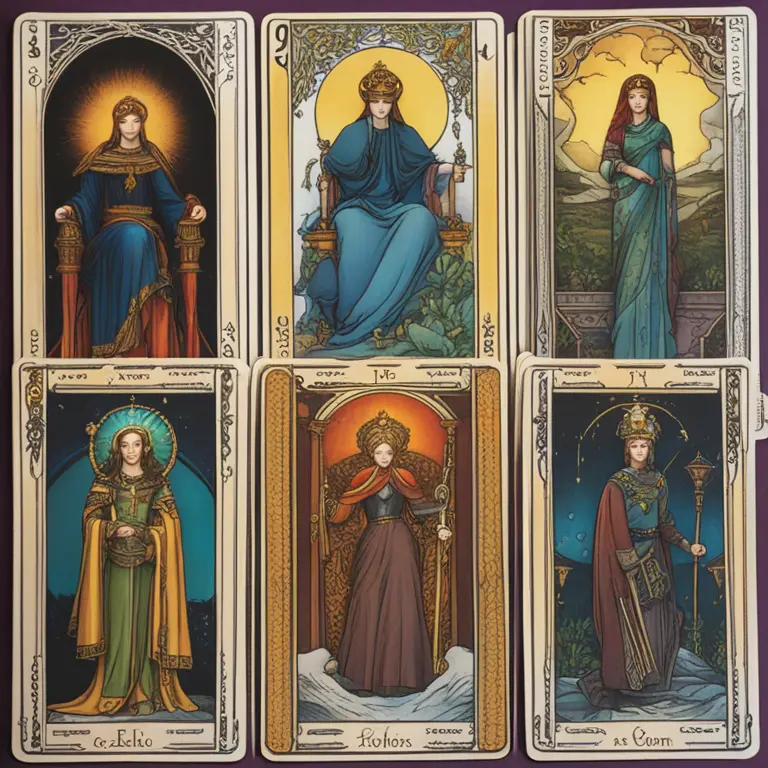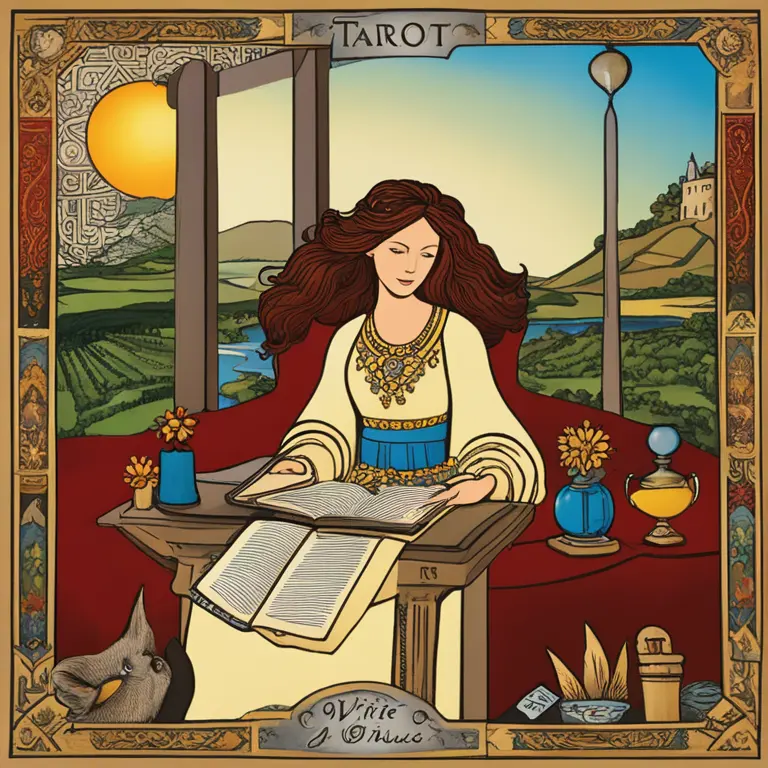
Tarot: A Writer’s Muse
Tarot cards have been used for centuries not just for divination, but as a source of inspiration. Many writers turn to the Tarot as a way to unlock their subconscious and enhance their creative process. Each card in the Tarot deck is filled with symbols and archetypes that can spark ideas, overcome writer's block, and help authors deepen their understanding of their characters and plots. Through the wisdom of the Tarot, writers can explore new pathways in their narrative and find renewed inspiration.

The Structure of the Tarot
To understand how to use Tarot for writing, one must first familiarize themselves with the Tarot deck's structure. A standard Tarot deck consists of 78 cards, divided into the Major Arcana and Minor Arcana. The 22 Major Arcana cards represent significant life themes and lessons, while the 56 Minor Arcana cards reflect day-to-day events. These Minor Arcana are further divided into four suits: Cups, Pentacles, Swords, and Wands, each related to an aspect of human experience. Knowing this can guide writers to craft multi-layered narratives.

Character Development with Tarot
Tarot cards can be a powerful tool for character development. Drawing a card can give you insights into a character’s personality, motivations, or potential growth. The rich symbolism can inspire backstories, fears, strengths, and weaknesses. For instance, The Fool might suggest a character that is naïve or on the cusp of a grand adventure, while The Empress could symbolize a nurturing figure or a person connected to nature. These archetypal traits can add depth to your characters and their journeys.

Plot and Conflict Through the Cards
In addition to character insights, Tarot can help generate ideas for plot and conflict. By performing a reading with a focus on your story’s progression, you can uncover new twists or challenges that your characters might face. The Five of Swords might hint at a Pyrrhic victory, while The Tower could suggest a sudden upheaval that changes everything. By introducing elements from the cards, writers can create compelling narratives that keep readers on the edge of their seats.
Setting the Scene with Symbols
The Tarot's rich imagery can also inspire settings and atmospheres within a writer's work. The moonlit landscape of The Moon card could evoke a mysterious or foreboding setting for a scene, and the regal opulence depicted in The Nine of Pentacles might inspire settings of wealth and luxury. By tapping into these visuals, writers can paint more vivid worlds for their stories to unfold.
Overcoming Writer's Block
Writer's block is a common struggle for writers, but Tarot can be a trusted ally in overcoming this challenge. When you're stuck, pulling a card at random can give you a nudge in a new direction or a fresh perspective on a scene. The Hanged Man, for example, can suggest looking at an issue from a different angle, while The Wheel of Fortune might hint at the role of fate or chance in your storyline.
Planning for the Future
As we look ahead to 2024 and beyond, the Tarot can be used to forecast trends and themes that might resonate with readers. Astrological correspondences within the Tarot can guide you toward writing about topics that align with the collective consciousness. Given the dynamism of the stars, aligning your writing with the cyclical nature of astrology and Tarot can give it timeless appeal and relevance.
Published: 1/17/2024
Modified: 1/17/2024
More predictions
Come back here soon to learn more about yourself and your future


Can Tarot Cards Predict Your Love?
Discover the mystical connection between tarot readings and predicting love, from finding soulmates to navigating relationships through the arcane.


The Art of Tarot: Insights from the Cards
Delve into the mystic realm of tarot card reading and discover how this ancient practice can offer insights into your life's journey.


Can Tarot Cards Forecast Your Future?
Discover whether tarot cards hold the power to predict what's ahead, and how this mystical practice might guide your future choices.